Please note: This post is an educational resource for common pet poisons (i.e. not for emergencies). I don’t have pictures of all the plants and fertilizers. If you believe your pet has ingested something toxic, please visit the Pet Poison Helpline or ASPCA Poison Control site (includes horse toxicity information) for a more comprehensive list, or call them at 855-764-7661 or 888-426-4435 respectively.
As many of you know, our March Challenge is all about pet poisons. My hope is that with this challenge, you will feel empowered to learn more about potential pet poisons. Today, we are going to discuss the different types of pet poisons that might be lurking in your yard. Unfortunately, there are a TON.
In today’s post, I will do my best to include the most common pet poisons from your yard. Later, I will discuss what you can do as a pet parent and the steps you need to take if you believe your pet has ingested any of the below items:
Common Plants:
For a complete list of poisonous plants, please visit Pet Poison Helpline’s Poisons Plant page, here. For the purpose of this post, I am concentrating on common plant types.
Azaleas: These plants are toxic to both cats and dogs. Symptoms include everything from digestive upset to general weakness, but can be fatal. This plant can be deadly; please call your veterinarian IMMEDIATELY if you think your pet has ingested any part of an Azalea.
Baby’s Breath: These plants are toxic to both cats and dogs. The level of toxicity is considered mild to moderate. Symptoms include, but are not limited to, vomiting, diarrhea, and depression.
Bird of Paradise: These plants are toxic to both cats and dogs. Symptoms include nausea, vomiting, lethargy, increased heart rate, and muscle tremors.
Cala Lilly: These plants are toxic to both cats and dogs. The level of toxicity is considered mild to moderate. Symptoms include, but are not limited to, drooling, vomiting, and pawing at the mouth.
Crocus: These plants are toxic to both cats and dogs. This plant can be deadly; please call your veterinarian IMMEDIATELY if you think your pet has ingested any part of a Crocus.
Daffodils: These plants are toxic to both cats and dogs. The level of toxicity is considered mild to moderate. Symptoms include, but are not limited to, increased heart rate, abnormal breathing, or vomiting.
Easter Lily: These plants are poisonous specifically to cats. This plant can be deadly to cats; please call your veterinarian IMMEDIATELY if you think your cat has ingested any part of an Easter Lily. The Easter Lily is also not the only toxic type of Lily for cats; please visit this link from Pet Poison Helpline for more information on toxic lilies.
Eucalyptus: This plant is toxic to both cats and dogs. Symptoms include, but are not limited to, diarrhea, weakness, or vomiting.
Fern Palm: This plant is toxic to both cats and dogs. This plant can be deadly; please call your veterinarian IMMEDIATELY if you think your pet has ingested any part of a Fern Palm.
Glacier Ivy: This plant is toxic to both cats and dogs. Symptoms include, but are not limited to, diarrhea, vomiting, or excessive salivation.
Hydrangea: These plants are toxic to both cats and dogs. Symptoms include, but are not limited to, diarrhea, vomiting, or lethargy.
Iris: These plants are toxic to both cats and dogs. Symptoms include, but are not limited to, diarrhea, vomiting, or drooling.
Mistletoe: This plant is toxic to both cats and dogs. This plant can be deadly; please call your veterinarian IMMEDIATELY if you think your pet has ingested any part of Mistletoe.
Peony: This plant is becoming more common in today’s modern decor. However, this plant is mildly toxic to both cats and dogs. Symptoms include gastrointestinal upset.
Poinsettias: This plant is mildly toxic to both cats and dogs. Symptoms include gastrointestinal upset.
Rhododendrons: This plant is toxic to both cats and dogs. This plant can be deadly; please call your veterinarian IMMEDIATELY if you think your pet has ingested any part of a Rhododendron.
Tomato: The green portion of this plant is toxic to cats, cows, and dogs. Symptoms include gastrointestinal upset.
Tulips & Hyacinths: These plants are toxic to both cats and dogs. The level of toxicity is considered mild to moderate. Symptoms include, but are not limited to, increased heart rate, abnormal breathing, or vomiting.
Wisteria: These plants are toxic to both cats and dogs. Symptoms include, but are not limited to, diarrhea, vomiting, or depression.
Gardening Add-Ins:
Blood Meal: This product is often used as organic fertilizer and can cause severe pancreatitis or iron toxicity.
Bone Meal: Similar to blood meal, this product is used as an organic fertilizer and is dangerous for pets.
Cocoa Bean Mulch: This product has the same toxic ingredients found in chocolate. It is difficult to determine the level of toxicity from brand to brand, but in extreme cases, the toxicity levels can be high enough to be fatal.
Compost: As the organic matter begins the decomposition process, molds may grow that can be toxic to pets. The symptoms associated with compost toxicity can be mild digestive upset and irritation, but can also include serious neurological symptoms such as seizures.
Pesticides: In theory, pesticides that are toxic to pets can make any plant (even plants that are not on their own toxic to pets) toxic. Most pesticides or insecticides are toxic, and a few are life-threatening, so act with caution and call your veterinarian IMMEDIATELY.
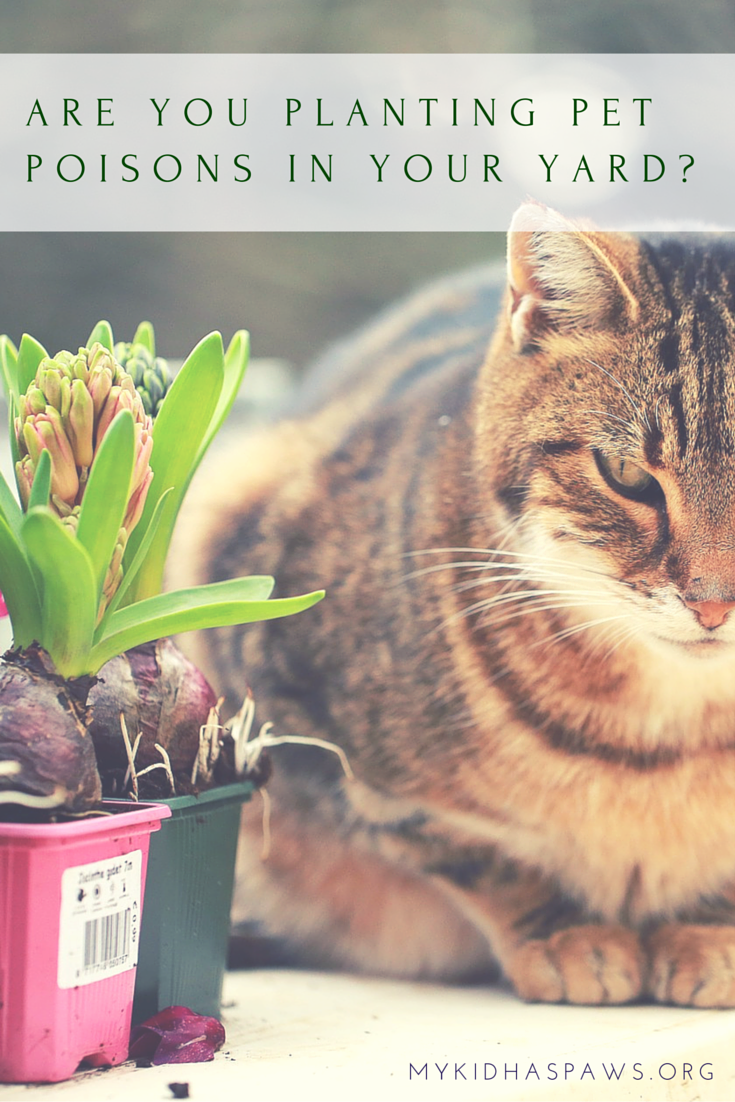
Other Items Commonly Found in Backyards:
Mushrooms: This is a very common toxicity. I have treated more than a few patients for eating mushrooms they found in the yard or on their walks. While there are mushrooms that aren’t toxic to pets, it is difficult to identify between toxic and non-toxic mushrooms, so we, therefore, need to treat every mushroom as a dangerous mushroom and act accordingly.
Mouse & Rat Poisons: According to the Pet Poison Helpline, there are 4 different types of mouse and rat poisons available on the market today. Each of which, have different toxic components, and, therefore, different consequences. It is also important to note that these toxins can cause relay toxicity. Relay toxicity is when your dog or cat is affected by the toxin ingested by a rat or mouse if they ingest the rat or mouse.
Slug & Snail Baits: According to the Pet Poison Helpline, slug & snail baits can be very toxic to pets. If you think your pet has ingested any slug or snail bait, please contact your veterinarian IMMEDIATELY!
Everything is toxic to my pet, so what do I do now?
If You Live in a Single-Family Home:
- When designing your garden and your backyard keep your pet in mind. Understand the difference between highly toxic plants and plants that might cause digestive upset. Simply knowing what you do, and do not, have in your garden and the potential toxicity levels can be crucial to saving your pet. Additionally, set up boundaries to keep your pets away from potential hazardous plants and fertilizers.
- Don’t turn to artificial plants as a solution. Some of these leaves & flowers might seem just as appetizing to a curious puppy or kitten. The toxicity levels of artificial plants vary greatly and should be taken seriously if you believe your pet may have ingested part of an artificial plant. (VPI Pet Insurance)
- If you believe that your cat or dog has swallowed any of the above items, immediately take them to your veterinarian or emergency vet. The sooner you take your pet to the veterinarian the better! Veterinarians can make your pet quickly vomit what they have ingested and then they can give them an absorbent agent that will prevent your pet’s body from absorbing the toxins.
- If you decide to look online before calling your veterinarian or another service (I still always recommend making the call!), please check multiple sources and stick to sites that have veterinary authors. Dr. Google is full of false information and it’s definitely not worth the risk.
- Have the ASPCA’s Animal Poison Control Center (888-426-4435) or the Pet Poison Helpline (855-764-7661) and your emergency veterinarian’s number readily available on your fridge. In an emergency situation, these services may encourage you to have your pet vomit before bringing them into the hospital if time is a factor (in some cases, it may be because you live far from an emergency veterinary hospital). If you need to make your pet vomit (also known as emesis), you will need 3% Hydrogen Peroxide, a turkey baster, and a towel. Once on the phone with one of the above services, they will tell you how much Hydrogen Peroxide to give your pet based on their weight. (PetMD). Be sure to wear gloves when you clean up your pet’s vomit as to not spread the toxin further. (Embrace Pet Insurance). Hydrogen Peroxide SHOULD NOT BE USED in rodents, rabbits, birds, horses, or ruminants (including sheep, goats or cattle) (VSPN).
- NOTE: I am not giving your measurement references or further instructions in this post because I believe you should call your veterinarian or one of the above services first! Your dog or cat may be at risk, and this might not be the right course of treatment. For example, if you have a short-nosed dog, you are risking aspiration by forcing them to vomit. PLEASE discuss this risk with the above services before inducing vomiting.
If You Live in an Apartment Complex, Condo, Townhouse or other shared space:
The reason I singled this out as its own category is because this is the most common type of living for people in the Bay Area and we don’t necessarily have control over the plants, pesticides and rodent deterrents that are used in our common living areas.
For example, in the place we live in now, there are mouse and rat traps all over, and I have seen dead rats in some of the side areas. Because I know that Rooney is at risk for relay toxicity if he chooses to consume any of these rats or mice, I only take Rooney out in the common areas on a leash (this is the right practice anyhow, but if you have a really well behaved dog you might want to consider common-area toxins) and I don’t let him go potty in the common areas.
Since you don’t own the property, do what you can to identify the different plants and potential toxins in your area and proceed with caution.
No matter the circumstance, always play it safe! If you don’t know, call your veterinarian or ASPCA’s Animal Poison Control Center (888-426-4435) or the Pet Poison Helpline (855-764-7661)!
A note on bird toxicity for my loyal reader Kismet: I did take a look at plant toxicity for birds. Here is a list of plants that are safe for birds from VCA.com, and here is a list of toxic plants for birds from the BirdChannel.com. Many of the plants listed above are also toxic to birds, but I didn’t include them in the above list because there was limited information on level of toxicity and symptoms. Lastly, here is a list of the top 5 most common bird toxins. I hope this helps!
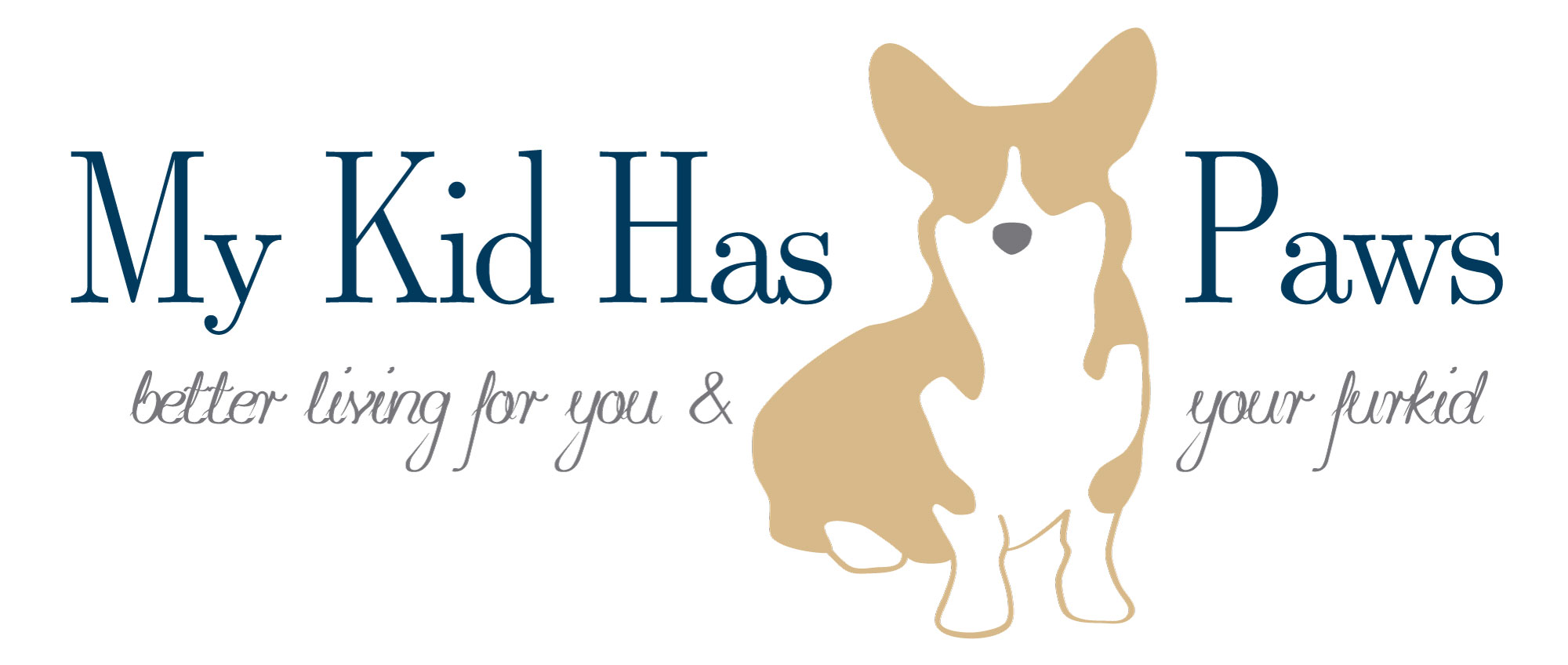

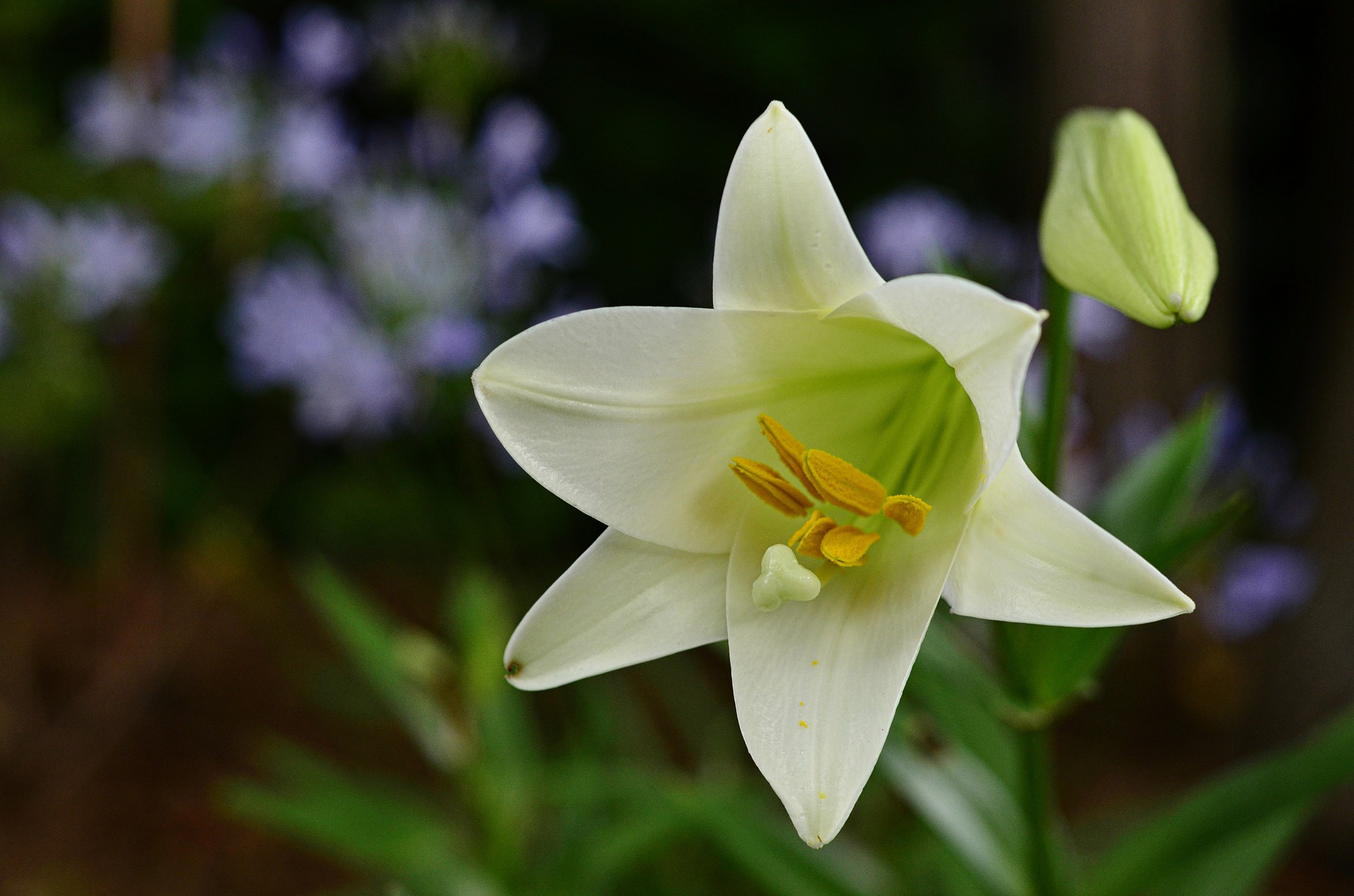

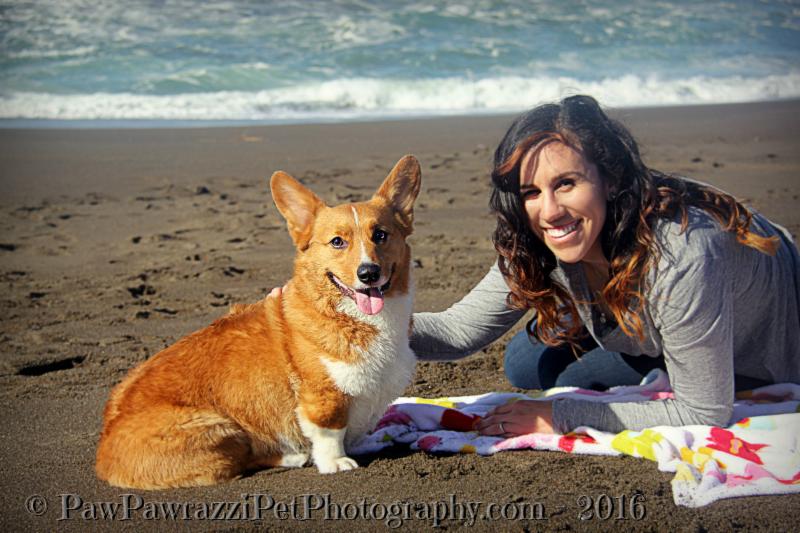
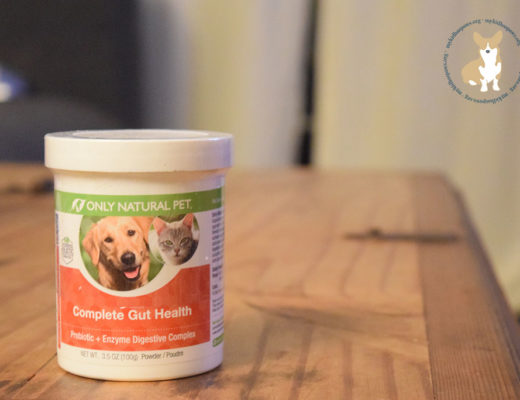

Kismet
March 13, 2016 at 8:04 amWe have two bird of paradise plants in the back yard and we haven’t had a problem with any dog and the plants yet. Maybe it is because they are “Mexcian Birds of Paradise”?
Kismet recently posted…Happy Hoppy Dance
M. K. Clinton
March 13, 2016 at 4:14 pmThis is such important information for all pet parents and gardeners.
Groovy Goldendoodles
March 14, 2016 at 12:31 pmI’m super sensitive to ANYTHING we put in our lawn. I’ve got fire ant hills and you will never ever guess what I use to get rid of them? Grits! Imagine that. A local gardner told me and I tried it and it works. I like the idea must better than the alternative – pesticides…
Groovy Goldendoodles recently posted…BEST CITY FOR PET TRAVELERS #CHARLESTONSC
CEO Olivia
March 15, 2016 at 2:59 pmThank you for for this pawsome post Rachel. Due to my epilepsy diagnoses we like to be very careful about what I come in contact with both in our home & yard.
We will be sharing this important information.
CEO Olivia
CEO Olivia recently posted…An Update On Our Epi Warrior Olivia